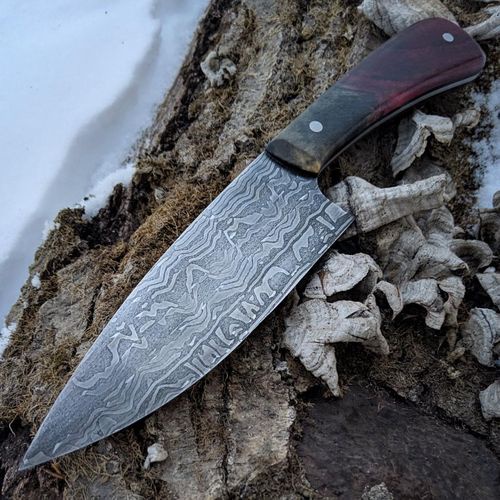Stabilizing Wood – #5 Dyeing Experiments
Having somewhat successfully stabilized a couple batches of wood, I figured it was time to add dyeing to the list.
I started with two tubs of cactus juice, dyed blue and red, and set pieces of wood in them for fifteen minutes or so. No vacuum, just open air. The dye was TransTint dyes in Bright Red, Blue and Black. Sorry I didn't make a note of how much dye I used, but I just eye-balled it, trying to get a fairly dark tint in the Cactus Juice.
The woods were some spalted maple, some rock maple, some hickory, and some white oak.

The fifteen minutes was a guess. It turned out to be about right for the spalted maple, but nowhere near long enough for the oak or rock maple, and a little too short for the hickory. So I learned that!
Then after baking the wood to cure the first bit of resin and letting it cool, I put it in a batch of black-dyed cactus juice and ran the vacuum for three hours. I started getting the smoke again and shut it down at that point. Curtis says that's just oil mist, caused by a vacuum leak somewhere in my system, but whether it's mist or smoke, I don't want it all over my garage. I really wish Curtis sold complete systems. I would have happily paid twice as much for a vacuum pump in order to not have to waste time trouble-shooting a vacuum leak.
Anyway, after three hours under vacuum, I shut it down and let the wood soak for another 16 hours or so. Again, not long enough. I only got good penetration of the black in the spalted wood.

But the spalted wood did come out very pretty. And now I know more than I used to.

Next up will be finding and fixing that vacuum leak so I can pull vacuum for longer without filling my garage with oil mist. But I've ordered some elm burl and spalted box elder that should also make pretty blanks.
Followup: The red, blue and black blank ended up getting used on a knife by my friends Craig and Jeff.


Discuss...
Reply to this in the fediverse: @davepolaschek@writing.exchange